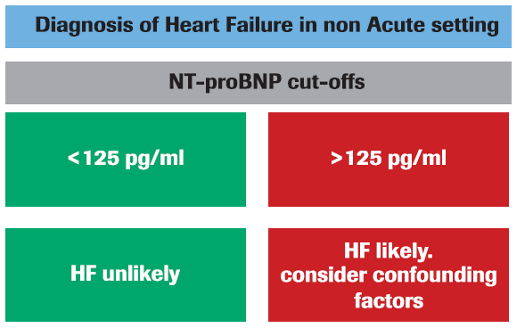Gatekeeper for improved diagnosis in both non-acute and acute settings to allow for better use of resources.1
In association with clinical evaluation, natriuretic peptides are recommended as the initial diagnostic test with the highest level of recommendation (IA) in major guidelines.2,3 Use Roche NT-proBNP to help you:
- Exclude heart failure (HF) in a timely manner with a high sensitivity and negative predictive value2-5
- Avoid unnecessary echocardiography and shorten the length of stay in the emergency department1,4,6-10
- Identify patients with high probability of having HF who need further cardiac investigation to confirm the diagnosis and initiate treatment2,3,11
- Identify patients in primary care who need referral to the specialist4,6,7


